N.O.V.A. 3 [Gameloft] – $6.99
Number of Results: 5
Each Mission has certain objectives which you’ll need to achieve either before progressing to the next area of a level, or completing the stage. These range from collecting DNA samples, to finding different resources like Koronite (the main orange material which you’ll be collecting a ton of), and taking it to certain drop off areas within the levels, or collecting red, blue, and yellow crystal energy to start up reactors, as well as searching for sensors to unlock doors, and more.
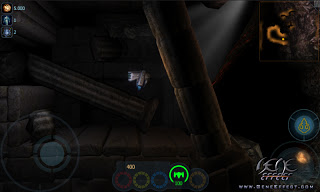 Lightstorm3D has definitely shown that they know exactly what it takes to make an amazingly immersive, incredibly depthy game with Gene Effect. The story, gameplay, graphics, controls, music, everything about the game really stands out as top-notch. Even without having GameCenter integration with no online achievements, or leader boards, it has a great amount of replay value that will drive completionists batty. Fans of exploration, sci-fi, mining, action, adventure and even puzzle games would do well to get this on their device as soon as possible. Gene Effect is definitely a game that stands out as a true console-like experience in an AppStore full of casual pick-up-and-play flash games. The $5 price of admission is well worth the journey you’ll be privileged to experience, and is highly recommended to all gamers looking for something more from the games on their iDevice. I sincerely hope iOS gamers will be able to see more from Lightstorm3D. It’s games like this that give me hope that the iDevice will grow into a serious gaming platform in the near future.
Lightstorm3D has definitely shown that they know exactly what it takes to make an amazingly immersive, incredibly depthy game with Gene Effect. The story, gameplay, graphics, controls, music, everything about the game really stands out as top-notch. Even without having GameCenter integration with no online achievements, or leader boards, it has a great amount of replay value that will drive completionists batty. Fans of exploration, sci-fi, mining, action, adventure and even puzzle games would do well to get this on their device as soon as possible. Gene Effect is definitely a game that stands out as a true console-like experience in an AppStore full of casual pick-up-and-play flash games. The $5 price of admission is well worth the journey you’ll be privileged to experience, and is highly recommended to all gamers looking for something more from the games on their iDevice. I sincerely hope iOS gamers will be able to see more from Lightstorm3D. It’s games like this that give me hope that the iDevice will grow into a serious gaming platform in the near future.
![]() Sci-Fi Sim Adventure. The genre’s completely new to me, but I don’t think I could have picked a better game to introduce me to the genre than DigitalFrog’s Space Frontier. Starting off, it has a great interactive tutorial that’s very easy to understand and shows you exactly what you need to know in order to make it through the game. During the tutorial, you’ll notice how much work has obviously gone into creating a great looking universe to play in, with loads of details, great object and item designs, and a fantastic atmosphere.
Sci-Fi Sim Adventure. The genre’s completely new to me, but I don’t think I could have picked a better game to introduce me to the genre than DigitalFrog’s Space Frontier. Starting off, it has a great interactive tutorial that’s very easy to understand and shows you exactly what you need to know in order to make it through the game. During the tutorial, you’ll notice how much work has obviously gone into creating a great looking universe to play in, with loads of details, great object and item designs, and a fantastic atmosphere.
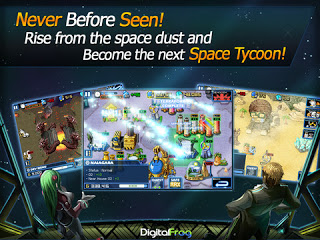 So, the whole object of the game is to build houses and make money, out in space. There will be some competition, especially from a character named Felipe, and his android, Doomsday, both with egos larger than the solar system you’ll be competing in. There are a bunch of little things you’ll need to keep your eyes on while you’re in the process of trying to build and make money. The sector that you’re building on will have a safety meter, which slowly decreases as you progress through each level, you’ll need to spend money to constantly keep this meter as high as you can so that your sector is not hit my an asteroid, which could destroy or damage buildings. Also, building your different types of houses requires you to spend minerals, which you will need to buy to replenish, as well as requires you to have enough robots to build them. This means that if you have 4 robots, you can only build a couple houses at a time, sometimes only one building at a time, depending on how many robots it takes to build that specific object.
So, the whole object of the game is to build houses and make money, out in space. There will be some competition, especially from a character named Felipe, and his android, Doomsday, both with egos larger than the solar system you’ll be competing in. There are a bunch of little things you’ll need to keep your eyes on while you’re in the process of trying to build and make money. The sector that you’re building on will have a safety meter, which slowly decreases as you progress through each level, you’ll need to spend money to constantly keep this meter as high as you can so that your sector is not hit my an asteroid, which could destroy or damage buildings. Also, building your different types of houses requires you to spend minerals, which you will need to buy to replenish, as well as requires you to have enough robots to build them. This means that if you have 4 robots, you can only build a couple houses at a time, sometimes only one building at a time, depending on how many robots it takes to build that specific object. 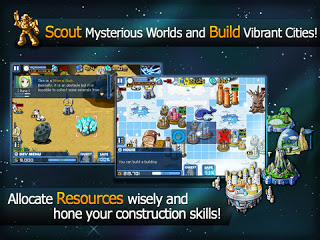 It might take multiple tries to beat each of Felipe’s times, but once you get the hang of everything, and multitasking, constantly keeping your eyes on the sectors safety, income, bank, minerals, and task progression. One thing I would absolutely love to see added in the future would be GameCenter. DigitalFrog has provided an in-game leaderboard that connects to their servers, which does help with the cheaters on GameCenter, but it takes away from competing against your GameCenter friends. Thankfully, there are in-game achievements. 54 to be exact. Some gamers love it when developers have their own leaderboards and achievement systems. I happen to be someone who happens to like when developers do this, but do understand why people want GameCenter integration. Still, it’s hard to say that no GameCenter is an issue when the developers do such a great job with their own in-game leaderboard and achievements like DigitalFrog has done here. You are awarded scores based on how quickly you complete the missions, and you can replay each mission, so making your way up the leader board, as well as competing against Felipe’s times does add quite a bit of replay value to the game. There’s also a Casual Mode that’s unlocked once you complete all of the regular campaign missions. For my first Sci-fi Simulation Adventure game, you can color me extremely impressed, and be sure that I’ll be searching the AppStore (and Steam) for more games in this genre. $3.99 is really a great price for the amount and quality of the content provided here with Space Frontier, and better yet, it‘s Universal! If you’re a fan of the genre, it’s one title you definitely need to check out, and if you’ve never heard of the genre, Space Frontier is probably one of the best, if not the best, game that you could first get, as you’ll end up being hooked from the moment you complete the tutorial levels.
It might take multiple tries to beat each of Felipe’s times, but once you get the hang of everything, and multitasking, constantly keeping your eyes on the sectors safety, income, bank, minerals, and task progression. One thing I would absolutely love to see added in the future would be GameCenter. DigitalFrog has provided an in-game leaderboard that connects to their servers, which does help with the cheaters on GameCenter, but it takes away from competing against your GameCenter friends. Thankfully, there are in-game achievements. 54 to be exact. Some gamers love it when developers have their own leaderboards and achievement systems. I happen to be someone who happens to like when developers do this, but do understand why people want GameCenter integration. Still, it’s hard to say that no GameCenter is an issue when the developers do such a great job with their own in-game leaderboard and achievements like DigitalFrog has done here. You are awarded scores based on how quickly you complete the missions, and you can replay each mission, so making your way up the leader board, as well as competing against Felipe’s times does add quite a bit of replay value to the game. There’s also a Casual Mode that’s unlocked once you complete all of the regular campaign missions. For my first Sci-fi Simulation Adventure game, you can color me extremely impressed, and be sure that I’ll be searching the AppStore (and Steam) for more games in this genre. $3.99 is really a great price for the amount and quality of the content provided here with Space Frontier, and better yet, it‘s Universal! If you’re a fan of the genre, it’s one title you definitely need to check out, and if you’ve never heard of the genre, Space Frontier is probably one of the best, if not the best, game that you could first get, as you’ll end up being hooked from the moment you complete the tutorial levels. 
![]() Science Fiction Real Time Strategy. A genre pretty much left untapped within the AppStore, there’s only a few titles that cover the 4X gameplay, but the ones that do are premium priced for a reason; extremely deep, intuitive user interface, hours upon hours of gameplay, endless replayabilty with almost endless results, and very strategic gameplay just to mention some biggies. Luckily for fans of the genre, Orator Games has just released Blue Libra. Not exactly a 4X game, but a mix between 4X and Galcon type gameplay gives hardcore fans of the genre something for quick plays, with more strategy and depth than any Galcon game, and new-comers to the genre something to help them get acquainted with the style. And at $0.99 ($2.99 for the HD/iPad Version), there’s pretty much no reason not to check it out.
Science Fiction Real Time Strategy. A genre pretty much left untapped within the AppStore, there’s only a few titles that cover the 4X gameplay, but the ones that do are premium priced for a reason; extremely deep, intuitive user interface, hours upon hours of gameplay, endless replayabilty with almost endless results, and very strategic gameplay just to mention some biggies. Luckily for fans of the genre, Orator Games has just released Blue Libra. Not exactly a 4X game, but a mix between 4X and Galcon type gameplay gives hardcore fans of the genre something for quick plays, with more strategy and depth than any Galcon game, and new-comers to the genre something to help them get acquainted with the style. And at $0.99 ($2.99 for the HD/iPad Version), there’s pretty much no reason not to check it out.
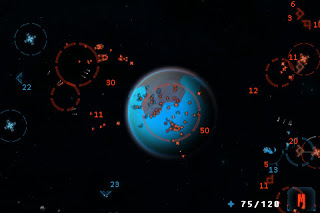 You’ll command the last of the Libra class of carriers to avenge the fall of your home world. Your main goal? Make your way across the galaxy back to your home world, destroying anyone who stands in your way. You’ll need to produce different types of ships, and take over planets and space stations, getting rid of the opposing force in each sector, upgrading your ships and main Libra carrier with multiple upgrades available in the shop, so that you can be sure to have the power and ability to take on anything that might be thrown your way. One wrong move, and you could wind up with a loss.
You’ll command the last of the Libra class of carriers to avenge the fall of your home world. Your main goal? Make your way across the galaxy back to your home world, destroying anyone who stands in your way. You’ll need to produce different types of ships, and take over planets and space stations, getting rid of the opposing force in each sector, upgrading your ships and main Libra carrier with multiple upgrades available in the shop, so that you can be sure to have the power and ability to take on anything that might be thrown your way. One wrong move, and you could wind up with a loss. 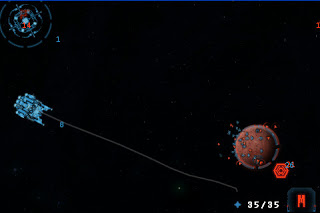 Again, at $0.99, there’s very little reason not to grab it, whether you’re a hardcore 4X RTS fan, or even if you’ve never played a Sci-Fi RTS before, it stretches across a wide length of skill levels, and provides simple yet still depthy gameplay. It’s definitely a title worth checking out, and one that you can easily sink hours upon hours into.
Again, at $0.99, there’s very little reason not to grab it, whether you’re a hardcore 4X RTS fan, or even if you’ve never played a Sci-Fi RTS before, it stretches across a wide length of skill levels, and provides simple yet still depthy gameplay. It’s definitely a title worth checking out, and one that you can easily sink hours upon hours into.